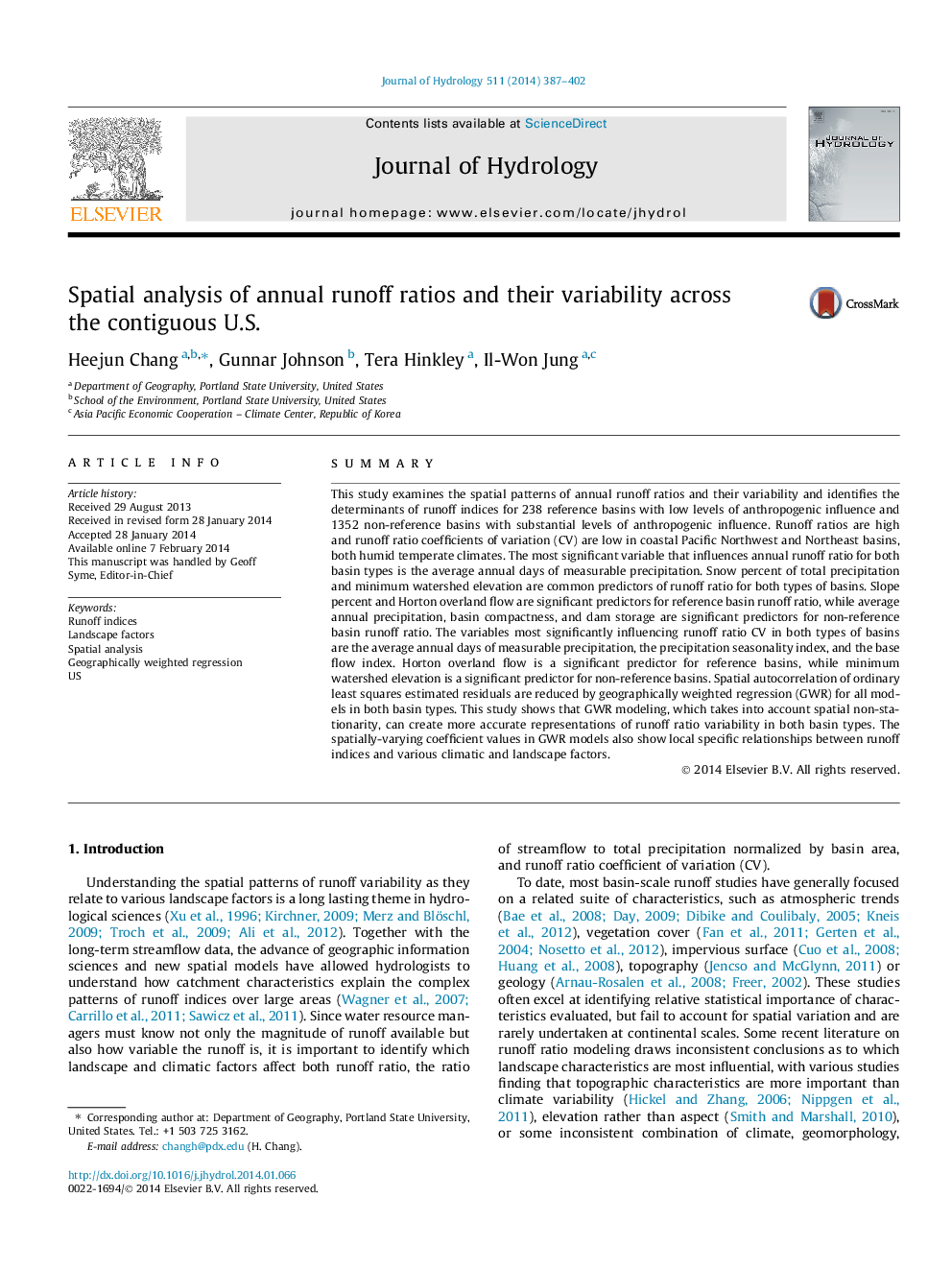| کد مقاله | کد نشریه | سال انتشار | مقاله انگلیسی | نسخه تمام متن |
|---|---|---|---|---|
| 6413300 | 1629937 | 2014 | 16 صفحه PDF | دانلود رایگان |
- High runoff ratio and low runoff ratio CV basins are spatially clustered.
- The number of days of precipitation is the major determinant of runoff indices.
- Precipitation seasonality and baseflow are important variables for runoff ratio CV.
- GWR models better predict runoff indices over OLS models.
- The relative importance of independent variables in GWR changes over space.
SummaryThis study examines the spatial patterns of annual runoff ratios and their variability and identifies the determinants of runoff indices for 238 reference basins with low levels of anthropogenic influence and 1352 non-reference basins with substantial levels of anthropogenic influence. Runoff ratios are high and runoff ratio coefficients of variation (CV) are low in coastal Pacific Northwest and Northeast basins, both humid temperate climates. The most significant variable that influences annual runoff ratio for both basin types is the average annual days of measurable precipitation. Snow percent of total precipitation and minimum watershed elevation are common predictors of runoff ratio for both types of basins. Slope percent and Horton overland flow are significant predictors for reference basin runoff ratio, while average annual precipitation, basin compactness, and dam storage are significant predictors for non-reference basin runoff ratio. The variables most significantly influencing runoff ratio CV in both types of basins are the average annual days of measurable precipitation, the precipitation seasonality index, and the base flow index. Horton overland flow is a significant predictor for reference basins, while minimum watershed elevation is a significant predictor for non-reference basins. Spatial autocorrelation of ordinary least squares estimated residuals are reduced by geographically weighted regression (GWR) for all models in both basin types. This study shows that GWR modeling, which takes into account spatial non-stationarity, can create more accurate representations of runoff ratio variability in both basin types. The spatially-varying coefficient values in GWR models also show local specific relationships between runoff indices and various climatic and landscape factors.
Journal: Journal of Hydrology - Volume 511, 16 April 2014, Pages 387-402
